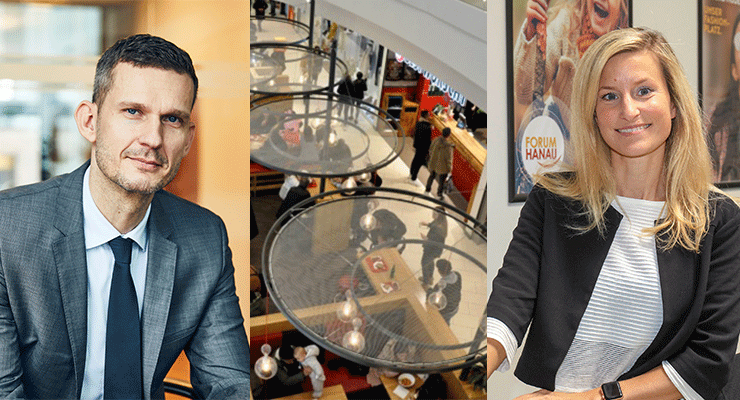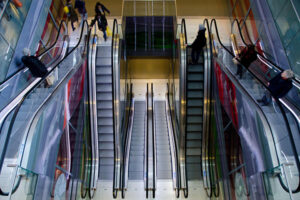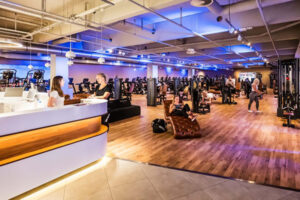ACROSS: What is the cornerstone of HBB? What is your field of activity?
André Stromeyer: HBB was founded in 1970, and its initial area of focus was housing construction. Additional areas were subsequently added. Today, HBB functions as a holding structure under which several companies operate. Nursing homes, for example, represent a key area. We currently have just under 50 nursing homes in our portfolio, and we are continuing to grow. The homes themselves are operated by Domicil Seniorenresidenzen SE, with which HBB has enjoyed a long-standing partnership. In addition, Capital Investors, which deals with commercial properties, was founded a few years ago. Of course, we are also very active in our main area of business, retail real estate. In that area, we cover the entire life cycle, from project development to revitalization and portfolio management. HBB is comprised of everything from small neighborhood centers to large shopping centers, retail parks, hybrid malls, commercial buildings, and mixed-use properties.
ACROSS: Who is responsible for the management of the properties?
Stromeyer: In 2012, HBB Center Management launched operations with the opening of City Center Langenhagen. It marked an important and successful step toward managing our properties ourselves. Some of the properties were later sold, which led to us having outside investors for the first time. As a result, we discovered that we could also offer good service to external investors, and we began to separately offer management services on the market. These days, our business is divided into three parts: We have our own properties, we have joint venture properties with other investors, such as Henderson Park, and we also have the traditional third-party business. In that area, we offer a modular system, from planning and the creation of building rights to the complete range of restructuring services. In addition, our core competencies naturally include leasing and management.
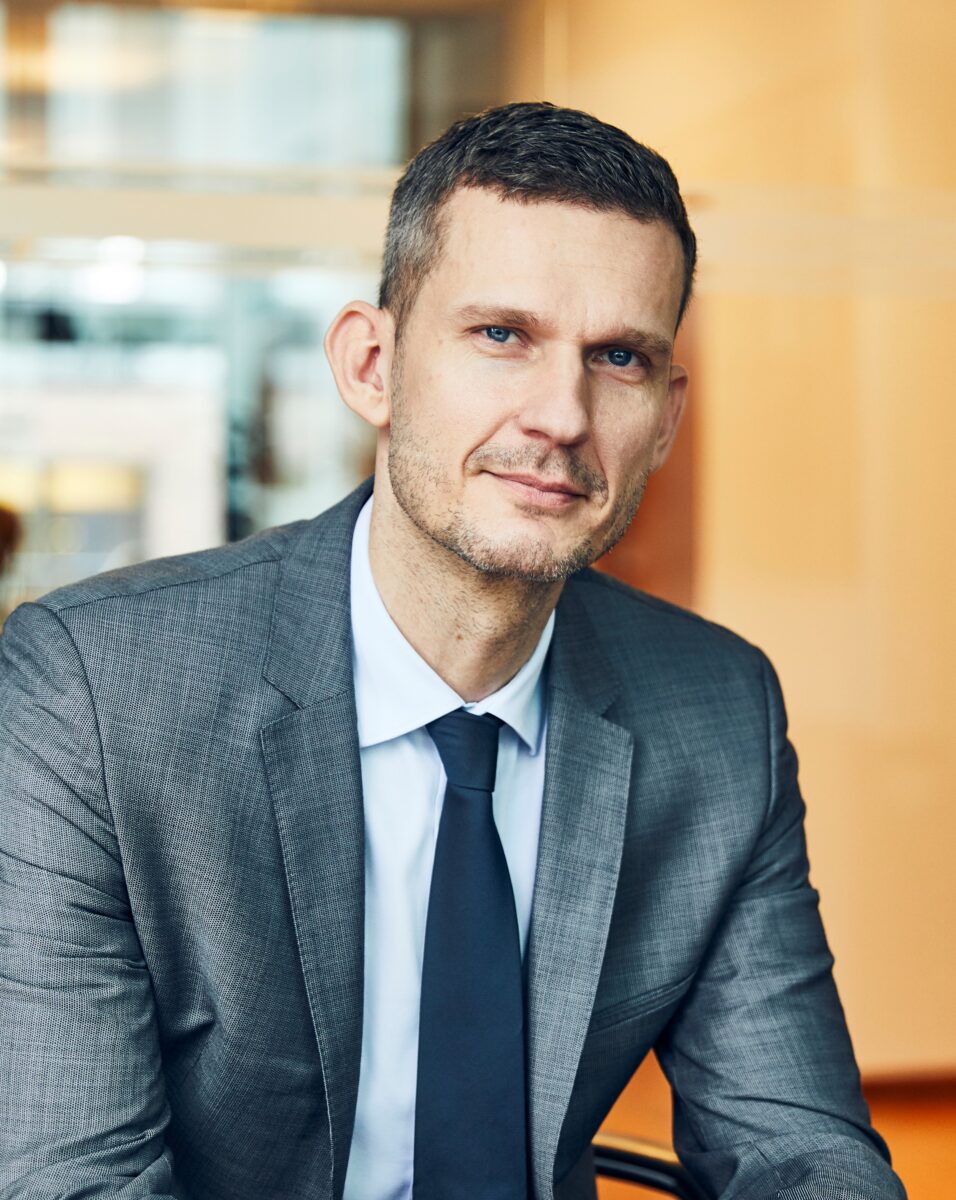
HBB Portfolio Size: There are 15 shopping centers in HBB’s portfolio, all of which are located in Germany. The acquisition of FACILITY SYSTEMS this year added further shopping centers and commercial buildings. The company also offers technical and commercial property management for office or hotel properties. Including the FACILITY SYSTEMS properties, some two million square meters of space are under HBB management. The largest property under management is the NordWestZentrum in Frankfurt. The HBB approach centers around offering investors an all-round, worry-free package. However, individual modules can also be selected and commissioned from the entire range of services.
ACROSS: What does that mean in specific terms? What is required from you?
Stromeyer: At present, the primary emphasis is on the refurbishment, modernization, and repositioning of retail properties. Those are our main areas of expertise. Nowadays, when investors ask us for advice, the issues and problems at hand are very fundamental. There are several studies that show that more than 50% of existing centers are in need of refurbishment. Therefore, the core questions to be answered are: How do I restructure a property and with which leasing approach? How do I position a center in a way that ensures it will remain well positioned in the future?
ACROSS: The times in which we are currently operating are quite challenging. What issues do you think are driving the market right now?
Stromeyer: Without a doubt, online retailing has been a driver of change for some time now. Customers can do everything from their sofas, including shopping via their smartphones, even on Sundays. Then, the coronavirus was added to the picture. That was when online retailing was embraced by people who had long resisted it, and, for the first time, even products for everyday needs, such as groceries, were purchased online. When returning to brick-and-mortar stores once again became possible, many people simply had no desire to try on clothes with masks covering their faces. The truth of the matter is that we are far from being in the post-COVID era. As a result, shopping centers need to create alternative incentives for visitors that go beyond simply buying products. Customers have limited free-time budgets, so being able to find everything at a given center that they would like to do and experience is ideal. Therefore, we have decided to combine shopping with leisure activities, such as cinemas, fitness centers, VR, etc. in order to create a high quality of stay, and to offer additional services. Shopping centers must become social meeting places. Supply chain problems and staff shortages, which have affected the entire industry, are major challenges for brick-and-mortar retail these days.
ACROSS: Has inflation had an impact on footfall and sales yet?
Stromeyer: Indeed, we can all see that prices have risen in many areas. As a result, the budget available for consumption is also being used in a more targeted manner. Traditional strolls through shopping centers have become less common. However, customers are making more targeted purchases, which has led to higher average receipt totals. In addition to inflation, energy costs have also risen. The exact effects will only become apparent in the months to come.
ACROSS: What is your placemaking approach?
Stromeyer: It has become abundantly clear that centers can no longer function solely as autonomous “shopping machines”. When it comes to shopping centers located in city centers, good integration into the overall urban fabric is advantageous. The key components of a functioning property are a mixed-use approach with a variety of uses, an appropriate design, good management that introduces a number of activities that attract customers, and integration into the overall urban fabric. It is all about developing centers into places in which people feel comfortable and enjoy spending time. Competitor analysis, catchment area review, customer consideration and, of course, a detailed assessment of the property in question are crucial. Not every retail property is likely to remain a (pure) retail property in the future. Moreover, what is absolutely perfect for one location may be completely wrong for another. For some properties (especially commercial buildings), that might also entail demolition and new construction if refurbishment within the existing structure is not possible. The most important factor, however, is always on-site anchoring. That is why we spend a lot of time examining the special features of the properties that we want to refurbish, and, based on that, we develop a unique placemaking strategy that is precisely tailored to the property. Of course, that also includes a suitable tenant and segment mix for the various usage types. A fitting architectural design and the creation of communal areas (including exciting gastronomic concepts) are, naturally, also part of the strategy. This is precisely why we at HBB do not follow a one-size-fits-all approach; every location is different, and the secret of success lies in taking individuality into account. However, unique places are always community-oriented. As such, in addition to gastronomy, leisure, and other entertainment concepts, we engage in numerous cooperative ventures with urban initiatives and associations (see box).
ACROSS: Do innovative concepts have to be economical, or do you find ways to afford them due to their aforementioned “uniqueness”?
Schreiber-Kleinhenz: Traditional leisure concepts, such as cinemas, fitness centers, and trampoline parks, are pitted against new concept categories, such as virtual reality and eSports. With respect to leasing rates, we have had experience with the former for quite some time. The newer offerings are clearly points of attraction that may not be very profitable, but require owners to invest in order to appeal to additional target groups. However, visitors to such attractions subsequently buy and make purchases at the property. For example, people who participate in a VR team-building event typically dine at the property afterwards. Making money “directly” from such attractions is not always the first priority. Those kinds of offers are part of the marketing effort and attract customers to the center, which the other tenants are subsequently able to benefit from as well. The fact is that the matter of location marketing or center marketing has also become more complex as a result of such issues.
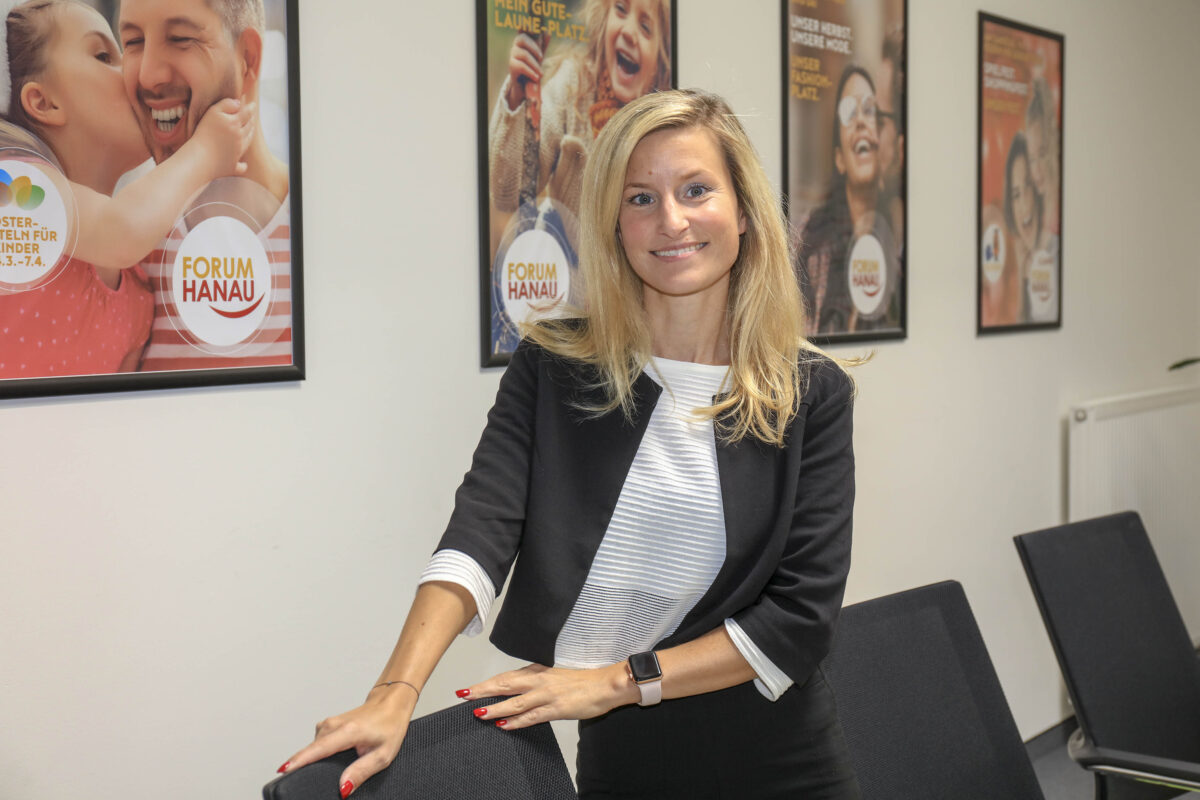
HBB-Regional Manager Center Management Rhein-Main area
ACROSS: Generally speaking, how would you describe the urban function of a center these days?
Schreiber-Kleinhenz: Centers are certainly playing an increasingly important role in that respect, because we are clearly moving away from the shopping theme and toward a mixed-use attraction that combines shopping with entertainment and other types of use. Visitors also have the option of going to a doctor’s office or to a local government office. The era in which cities and centers were in competition with each other is over. The common goal is to make city centers more interesting. To that end, centers (in downtown locations) are naturally evolving into mixed-use properties that feature a wide range of diverse building blocks.
ACROSS: Does that mean that retail no longer plays a prominent role?
Stromeyer: It depends on the location. A few years ago in Bochum, for example, we wanted to build a traditional shopping center comprised of just under 80 units in the city center. After the decision had already been made, we turned the project on its head and developed a mixed-use attraction at which retailing now plays a subordinate role. At present, we have more than 20,000 square meters of office space, a hotel, a fitness center, spacious restaurant areas, and retail space on large-scale sites in Bochum.
ACROSS: In terms of tenants, what impact has the current situation had? Have there been any shifts in the segment mix?
Stromeyer: For some time now, we have noticed that a number of suppliers have become smaller, particularly in the large-format sector. However, there are other retailers that simply decide to make one very large store out of the three stores they have in a particular city. These days, retailers are carefully assessing the amount of space they really need. For example, large textile stores are cutting back on space and integrating offices in place of products. Of course, on the tenant side, we can see that some suppliers are less expansion-oriented than they used to be, and concepts are leaving the market, as was recently the case for the retailer Orsay. New concepts are emerging, however. A current and prominent example is Lids, a US sporting goods company. At the same time, so-called hype trends, such as the current sneaker trend, are flourishing. The local supply sector has become increasingly important (and not just since the outbreak of the coronavirus). I have already mentioned the other changes (more leisure, office, and gastronomy concepts). The gastronomy sector, in particular, never ceases to surprise us with new concepts. However, this is exactly what consumers want. They constantly want to experience new things and see new concepts. They are not satisfied if there is no change. Pop-up concepts are a good way of satisfying those needs, and today they serve as so much more than just a means of concealing vacancies.
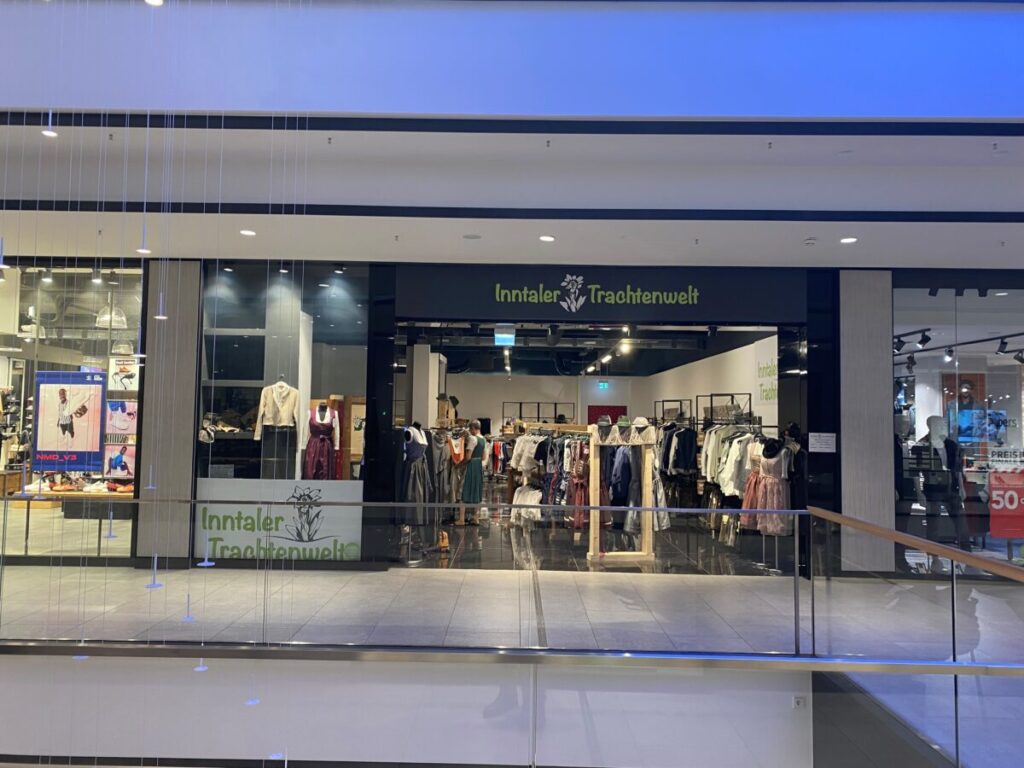
ACROSS: How do you deal with your retailers’ other activities at the centers? Many retailers operate their online stores from their branches. How is that reflected in your business model?
Schreiber-Kleinhenz: There has to be a link between online and offline retail. At the very least, retailers must be visible online, otherwise they may not even be included in the consumer’s evoked set in the first place, and that is something we also enhance via various projects. There is no way that we can defend ourselves against online retail, which is why we need a joint approach on that front as well. For example, we help tenants with their “Google My Business” pages. That is an area in which the cities are also heavily involved, particularly since the onset of the coronavirus. During the height of that period, we also introduced Click & Collect boxes. They have allowed retailers at the sites to manage their customer flows: those who really want to go into a particular store, and those who just want to pick up the goods they have ordered. It has also made it possible for opening hours to be extended.
Stromeyer: We constantly test new possibilities in that area. However, when it comes to integrating e-commerce and brick-and-mortar retail, we have to admit that some projects fail because retailers simply refuse to actively participate. Chain stores, in particular, claim that their existing closed system is enough for them. Regional retailers and individual operators are much more appreciative of our support. However, online retailing is still an issue when it comes to sales-based rent in the case of lease agreements.
ACROSS: What functions do the pop-up stores you mentioned earlier serve?
Stromeyer: Nowadays, the function of the pop-up concept is to offer customers something special and to give retailers or start-ups a chance to try things out. For example, our HBB pop-up store features a space that can be used to sell socks one day and groceries or consumer electronics the next. It is designed to eliminate the reluctance of smaller retailers, in particular, who are concerned about long lease terms and high rents. Investment costs are very low, and both sides can test the waters with respect to whether or not a given situation is feasible. Those spaces also act as incubators. We test concepts there and if they work well, the retailers move to other spaces on a long-term basis.
Schreiber-Kleinhenz: Such an approach provides a safeguard in all directions: We want to be partners, but we also want to have concepts that work in the long term. Pop-up concepts also bring the idea of community into play. In Munich, for example, there is a pop-up blood donation initiative in cooperation with the Bavarian Red Cross, as well as a social pop-up. Various charitable organizations were guests for a week and gave presentations, the public library organized various lectures, and other associations organized children’s programs.
ACROSS: Do the spaces pay off? Are they cost-effective, or are they, to a certain extent, marketing schemes?
Schreiber-Kleinhenz: In the case of “incubator spaces”, we typically agree on individual and tenant-specific rental models. Our ultimate goal is to develop the concepts so that they can move to other spaces on a long-term basis and then (after both sides have tried out the concept and the location) pay a suitable rent. When it comes to social pop-ups, we want to fulfill our social responsibility, so rent is not the primary consideration. Of course, there is also a marketing aspect to it. We recently had a very successful project at a pop-up store in Hanau under the project name “Tatkraft”, which was a collaboration between the regional trade association, the Federal Employment Agency, Hanau Economic Development, and Hanau Marketing GmbH. Interested parties were given the opportunity to learn more about the specific trades and to try them out on site, from planing wood to laying tiles. As a result, young people, in particular, were able to try out skilled trades. Numerous students from all over the region visited the center. We also wanted to help counter the shortage of skilled workers in the various trades. At HBB, such activities can be carried out within a very short space of time and are a major boost to cooperation with the cities.
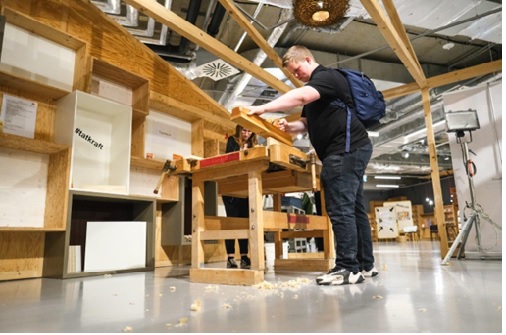
ACROSS: Preparations are underway for the all-important Christmas season at many centers. Uniquely designed centers often consume a great deal of energy. In Austria, for example, whether or not cities should reduce their use of lighting is being discussed. What does that mean for their centers?
Stromeyer: When it comes to the takeover of center management, in particular, saving on ancillary costs is always an issue. That is always one of the first issues addressed when we take over new properties. The processes are quite pragmatic. For example, we replaced the lighting in one parking garage with LED lighting. In one fell swoop, we saved tens of thousands of euros per year. Correctly configuring the technical systems can also reduce costs. At present, of course, that is a particularly important topic. The cost of energy has skyrocketed and is expected to continue to do so. For a few months now, our teams have been examining where and how even more energy can be conserved at the respective properties, irrespective of the German government’s short-term energy supply assurance measures ordinance. We have already successfully taken a number of steps in that area and are, therefore, able to reduce the increase in costs as much as possible.
Schreiber-Kleinhenz: Even though the media has made the issue seem relatively new, we have been working on it for a very long time. The various coronavirus lockdowns sparked a discussion about ancillary costs and savings. At centers where only five of the 90 stores were open because they belonged to local suppliers, we simply could not keep the entire infrastructure running. Accordingly, we have had quite a bit of practice over the past two years. Needless to say, we are currently engaged in intensive discussions regarding whether we can reduce the temperature at the centers by another degree, for example. Again, close cooperation with the tenants is crucial. They have to be involved when it comes to questions concerning when, for example, the escalators should be switched off. It has become quite clear, however, that far fewer lights are to be left on during the evening hours.
The Creation of “Unique Places”
When customers shop more selectively, places must become more attractive. Placemaking, at its core, is all about making spaces attractive. In practice, that involves the creation of individual places that feature a high level of regional connectivity, as these examples from the HBB portfolio show:
FORUM HANAU
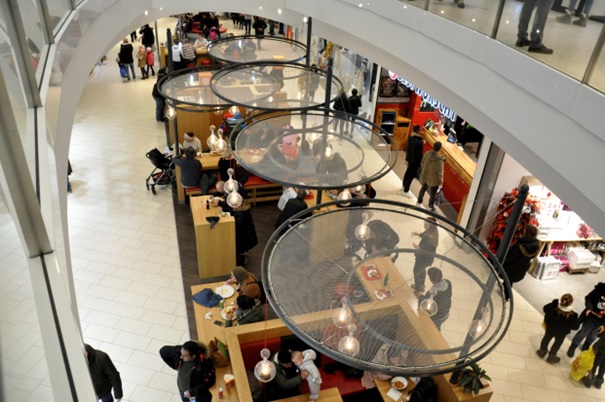
Schreiber-Kleinhenz: “We are pursuing a clear mixed-use approach at that location. For example, we have integrated a public library and a cultural forum, which covers just under 7,000 square meters. In addition, an outdoor area with a clear focus on gastronomy, a fitness center, offices, and services can be found. Such a mix enables the customer to spend the entire day with us. The center in Hanau is located right in the heart of the city center. We have had the same flooring and lighting fixtures installed in the outdoor area as can be found throughout the city center, which creates a uniform image of the city center as well as the center in the eyes of the customer.”
RATHAUS GALERIE ESSEN
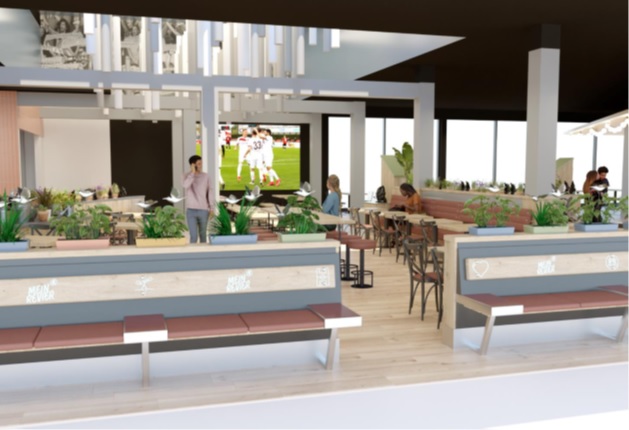
Stromeyer: “The Rathaus Galerie Essen is an excellent city-center project that boasts high footfall and a lot of potential. However, it was plagued by a few issues. For example, one of the two sections of the center was significantly less frequented. In addition, the center was poorly anchored in the region. Before we acquired it, together with Henderson Park, the fundamental question concerned what should be done with it. The first thing we did was tear down the front façade to provide better visibility, and we created a nice coffee area complete with an outdoor plaza. Thus, the first issue was the quality of stay. Retail outlets have been excluded from one dedicated part of the mall. That is where the new food mall is being built, which is scheduled to open soon. We have opened the facades to the outside in that area, thereby enabling customers to enjoy a pleasant view while dining and experience a sense of spaciousness. The theme of the property is: My home, my district, which is also reflected in the architecture, as well as in the tenant and shop mix. In addition to the high proportion of gastronomy, a new fitness center and other exciting entertainment concepts will be included.”
FORUM SCHWANTHALERHÖHE, MUNICH
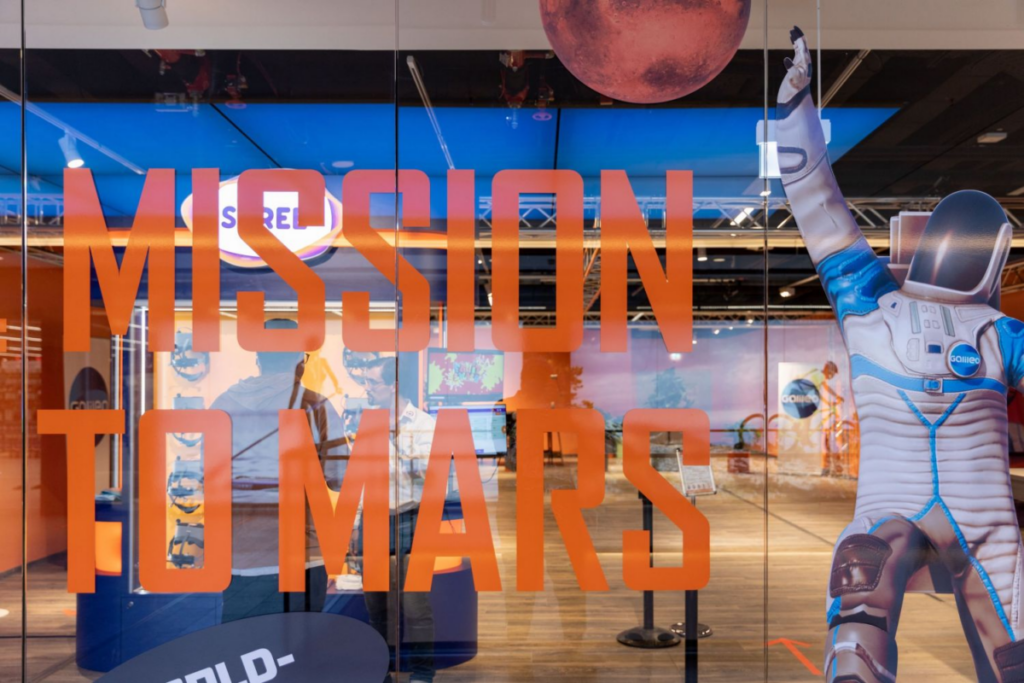
Stromeyer: “This is a neighborhood development in a former furniture store, located directly by Theresienwiese, in a rapidly developing district that has a large catchment area. We configured the shop and tenant mix to reflect all of that. Close integration with the surrounding neighborhood was also a priority in this project, and we created many areas in which people can relax and spend their time. Alternative approaches to cooperation were tested at an early stage at Forum Schwanthalerhöhe. “Mission to Mars”, a virtual reality project that was launched at a brick-and-mortar store for the first time, is one example. The VR experience is fully booked every week, as it has been from the start. People book their appointments online, but they go out for coffee or to the toy store afterward. We also collaborated with gaming experience provider MultiBall and Civil Relief Munich to provide aid to Ukraine. People showed up to find out how they could make donations or become host families. However, their children were also able to have a bit of fun. Making a connection with the surrounding area and the catchment area is very important to us. This year, for example, Forum Schwanthalerhöhe served as a cooperation partner for the Art and Culture Days event for the first time. In order to ensure the best possible anchoring in the neighborhood, we also closely cooperate with the district as well as with numerous associations and organizations from the surrounding area on a variety of topics.”

Not only does HBB closely cooperate with cities, initiatives, and the various communities in the vicinity of its centers, but it also takes a personalized approach to potential employees, thereby enabling it to develop its staff members in the best possible way. Anita Stampfl explains: “In addition to internal training, we also specifically focus on the issue of lateral recruitment at our individual locations. To give you one example: At one of the centers that we operate in Bavaria, we had an assistant who already had several years of general work experience – albeit not in the area of center management. We quickly recognized her potential, after which she completed our trainee program and became a center manager. One of HBB’s unique selling points is that we do not only focus on so-called young talent – we promote employees of all ages based on their motivation, talent, and commitment. We take a very close look at the development potential of lateral hires and experienced employees. That is particularly important during periods in which there is a shortage in the labor market. The key factor here, however, is the open-mindedness that exists at HBB: Not only is every applicant given a fair chance, but the company is not afraid to develop new and flexible job profiles that fit both the needs of the respective location as well as the applicant.”

